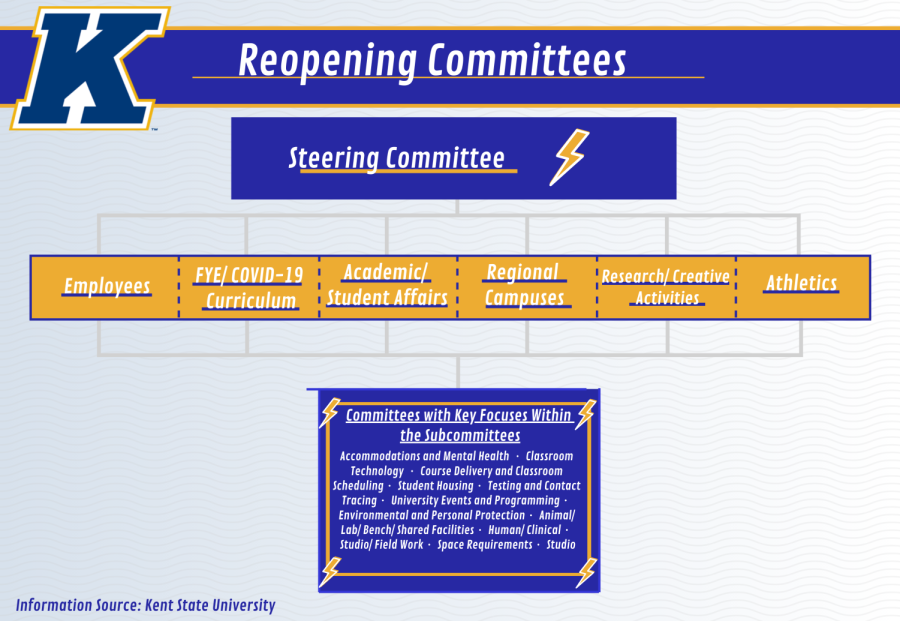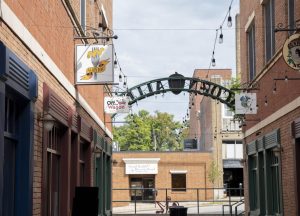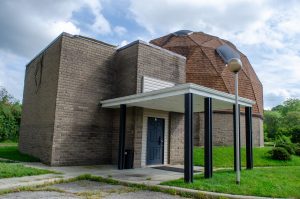Kent State reopening committees reveal details for plans on resuming in-person courses
July 12, 2020
Kent State University’s reopening committees are finalizing plans for the safe reopening of all campuses for the fall semester with classes resuming Aug. 27.
The reopening committees, composed of more than 70 university community members across all campuses, are currently working on “Phase 2” of the reopening process.
Manfred van Dulmen is the interim associate provost at Kent State and chairs the steering committee for reopening. He oversaw all reopening operations, including plans for classroom space requirements and personal protection and safety on campus.
Van Dulmen said the most notable of the details released this week is that students must agree to the KSU Student Pledge. Specifically, students across the main campus and all regional campuses will be required to wear face coverings when in public areas to prevent the spread of COVID-19.
Kent State will provide each student with two cloth face masks. This aims to have students assume responsibility for keeping themselves and others safe, according to the pledge.
In certain cases, individuals that face health issues preventing them from wearing a face mask can submit a Pandemic Adjustment Request Accommodation Form.
Details on in-person class procedures were also finalized this week.
Doug Pearson, associate vice president for facilities planning and operations, said the environmental and personal protection committee purchased personal protection equipment for staff and students for the return to campus including face coverings, hand sanitizer, surface disinfectant and gloves for those who need them.
“Supply of necessary personal protective equipment has been an issue because universities across the country are purchasing the same equipment and supplies,” Pearson said. “We are also competing with health care and other industries for the supply of these items.”
In terms of actual classroom safety, multiple policies were put in place in accordance with guidelines for institutions of higher education set by the Centers for Disease Control (CDC) and Gov. Mike DeWine for the state of Ohio.
“The space committee has a few primary charges. The biggest one was to evaluate and modify the capacity in over 1,100 instructional spaces and rooms on the Kent campuses and regional campuses,” said Michael Bruder, executive director of facilities, planning and design and chair of the space requirements committee.
To adhere to social distancing guidelines, seats in lecture halls will be marked with stickers indicating if a student is permitted to sit in a particular seat.
Regional campuses intend to remove some seats from classroom spaces altogether, van Dulmen said. Kent main campus will not be doing this due to a lack of storage space.
Green stickers that say “sit here” and red stickers that say “not in use” will help students maintain the proper six feet of social distancing between themselves and their peers while in class.
“Disposal disinfectant wipes will be provided in every instructional space for students when they sit down and for instructors to clean their teaching stations,” van Dulmen said. “It is similar to how grocery stores provide wipes to wipe down carts before you shop.”
According to Bruder, custodial staff will clean classrooms and bathrooms twice a day using Environmental Protection Agency-approved disinfectants for killing the COVID-19 virus. They will also clean touch points frequently throughout their shift.
Bruder said other areas of focus for the committee include modifying circulation patterns, modifying how people get in and out of the classrooms and down the corridors and creating signage to indicate where to sit in classroom settings and reinforce safety guidelines.
Signage will specify entrance and exit doors into or out of lecture halls. Classrooms in these halls will also require students to enter through one door only and exit through the other.
However, classroom environments are not uniform. Bruder provided information on different factors affecting various in-person instruction situations.
In order for courses within the College of Architecture and Environmental Design to maintain proper distance guidelines, the space requirement committee is extending their studio space beyond the college’s building.
“We’re going to be using a couple of spaces in Terrace Hall as studio space for them, spaces over in the MACC Annex, we may possibly need to convert old dining spaces for them.” Bruder said.
Leisure spaces such as tables to work at and chairs to sit in as students wait for class will remain in lecture halls, Bruder said.
Alterations to leisure spaces in lecture halls include markers indicating where students are permitted to sit, distributing the space down the length of a hall if feasible and asking students to limit their congregating before and after classes.
The implementation of floor markers to ensure six feet of social distancing will also be administered.
“I think buildings are going to be less crowded as well, because even if we scheduled every seat in a building, it’s only going to be filled with 25 percent of the number of people that used to be in the building,” Bruder said. “And that means the corridors will just be less crowded.”
Bruder said providing the KSU community with the maximum benefit of preventing the transmission of the virus relies heavily on students’ behavior.
All students, faculty and staff are expected to follow the Flash Safe Seven Principles during any interactions with others on campus.
Students who fail to follow guidelines or exhibit unsafe behaviors could be reprimanded for violating the Classroom Disruption Policy or other policies outlined in the Code of Student Conduct.
Ventilation in buildings will also be monitored and adjusted, Bruder said.
“Our approach has been that where we can increase the air changes per hour —the amount of outside air gets brought in and sent out — we will,” he said. “But through our research, the conclusion was nothing beats wearing masks, washing your hands and physical distancing.”
van Dulmen said the university will work with the Kent City Health Department as well as the Portage County Health Department to contact trace on the main campus.
The university will also establish a COVID-19 Watch Response Team to manage and trace cases of the virus.
“We’ll have a central point to coordinate and the watch team will be the interface between all campus locations and the correlating health departments,” van Dulmen said.
The Deweese Health Center will provide on-campus COVID-19 testing. The building is currently undergoing renovations to create negative pressure rooms for testing.
The university also plans to invest in a back-up trailer for a second testing option, van Dulmen said.
Other details regarding on-campus activities were released to students last Friday following the work of the reopening committees. The information provided includes procedures for the KSU Kick Off event, dining hall plans, residence hall plans, hall spaces and more.
“We want everyone safe first and foremost, but we also hope to maintain year-round campus activity,” van Dulmen said. “So the reopening committees are working hard to ensure we provide the Kent State community with that balance.”
Contact Connor Steffen at [email protected].















